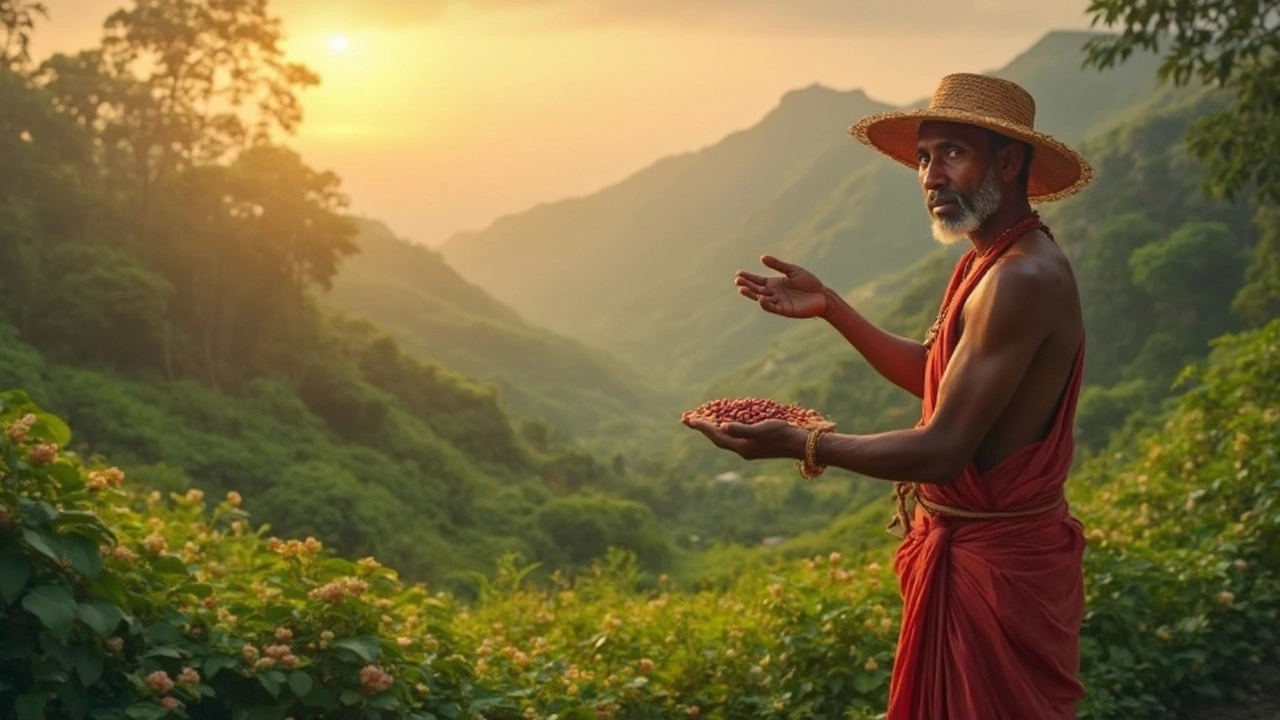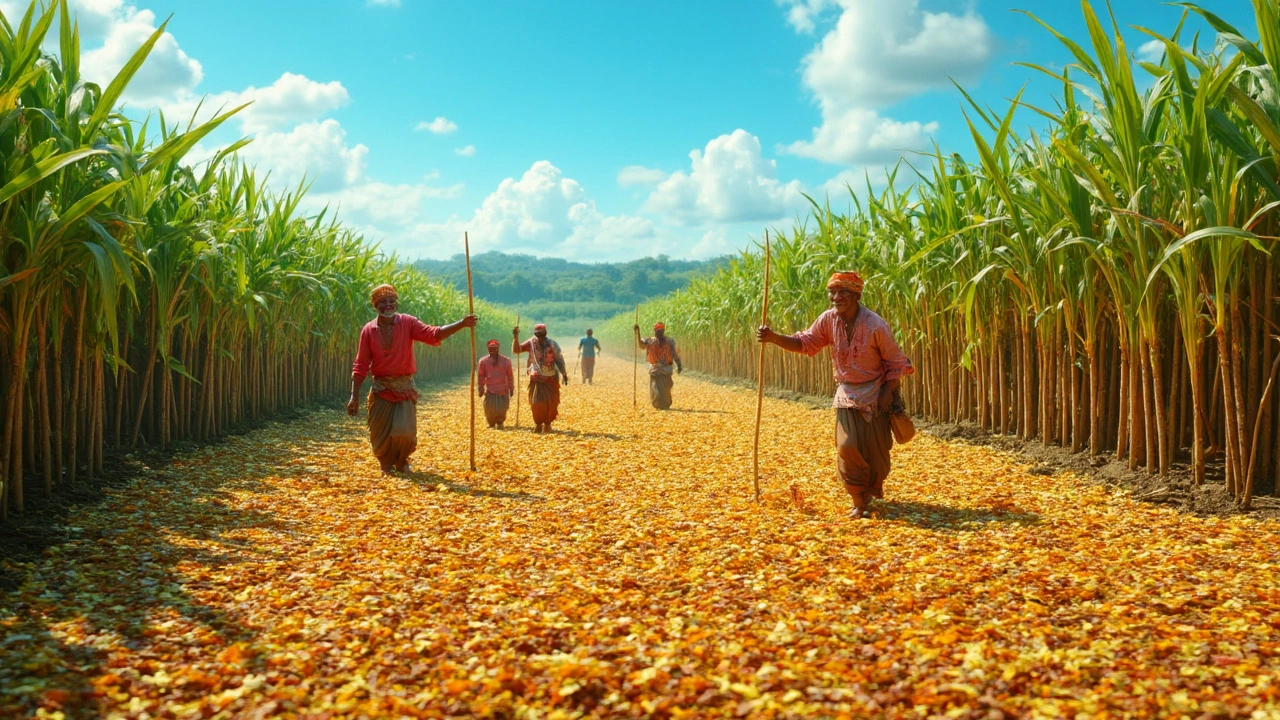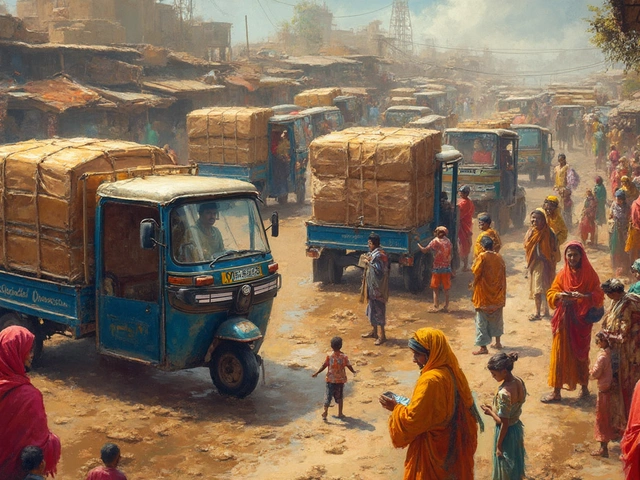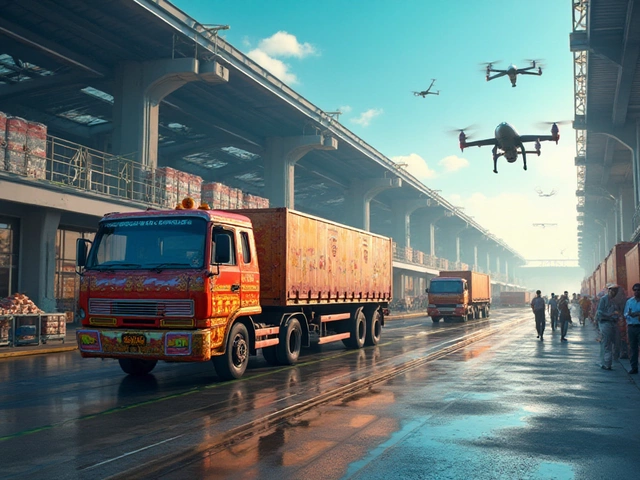Ever found yourself drinking a Coke and wondered, 'Where do they get all this stuff to make it?' Let's dig into Coca-Cola's treasure map of raw materials. Just look at sugar. Most of Coke's sugar comes from various parts of the world, with a big chunk sourced in partnership with local farmers in Brazil and India. This isn’t just about taste; it’s about getting the right quality and keeping ethical sourcing in check.
And what about caffeine, that all-important wake-up call in each can? Well, Coke often looks to coffee and tea plants. Yep, your caffeine might just have roots in China’s tea fields or Vietnam’s coffee plantations. Wild, right? This setup ensures that the caffeine kick we expect doesn’t take a hit from inconsistent supply.
- The Secret Ingredients
- Sugar Sourcing Strategies
- Caffeine Origins
- Flavorings and Their Journey
- Sustainable Practices in Sourcing
- Logistical Wizardry Behind the Scenes
The Secret Ingredients
When you sip on a Coca-Cola, you're tasting a blend of unique components that have been kept under wraps for decades. The real magic lies in its formula, famously known as 'Merchandise 7X.' This isn't just another boring name; it's the heart of the recipe, adding that quirky taste we all love.
You've probably heard about the legend that only a few select people know the actual formula. While it sounds like a plot from a mystery novel, it's partly true. Coca-Cola remains tight-lipped about certain details, keeping them locked away in a high-security vault in Atlanta. But don't get your hopes up for a heist-themed adventure anytime soon!
A big part of Coke's appeal comes from its natural flavorings. While the precise nature of these is a closely-guarded secret, it's known they include extracts from various herbs, spices, and even the kola nut, originally found in Africa. In fact, this is where Coca-Cola gets its 'cola' name.
'The formula is like the crown jewels, an integral part of Coca-Cola's global identity.' – A Former Coca-Cola Executive
But wait, there's more. The sweetener story isn't just about plain old sugar. Over time, they've diversified their sugar sourcing to include high fructose corn syrup, especially in the U.S., due to economic and taste preference shifts. Still, in many countries, Coca-Cola sticks to trusty cane sugar to keep that classic taste alive.
Understanding where these raw materials like sugar, caffeine, and flavorings come from is crucial in grasping how Coca-Cola manages to maintain its iconic taste while also adapting to local market quirks and consumer demands. Coca-Cola's challenge is to blend innovation with tradition, ensuring every bottle and can delivers the taste you expect, yet keeping production sustainable and efficient.
A little slice of trivia: Did you know Coca-Cola goes through rigorous blind taste tests to maintain consistency? Yep, they do! Endless labs work behind the scenes, tasting and tweaking to ensure that unmistakable flavor, whether it's on a steamy street in Mumbai or a chilled-out cafe in Sydney.
Sugar Sourcing Strategies
When it comes to Coca-Cola and their thirst-quenching drinks, sugar is a top player. But sourcing it? That's a different ballgame. Most of the sugar you find in their drinks is from sugarcane and sugar beet. But did you know they source a big chunk from Brazil and India? It's like a sweet partnership that ensures not just the right flavors but also adds a dose of global economic benefit. By working with different regions, Coca-Cola minimizes risks tied to weather or market changes. Smart, huh?
Now, Coca-Cola isn’t just about buying sugar from anyone. The company actively partners with local farmers, ensuring they not only get top-quality sugar but are also supporting these communities’ livelihoods. This isn’t just savvy business—it’s part of their sustainable sourcing policy. It’s like they’re saying, 'Hey, we care about where our sugar comes from.'
And, ever wonder how they juggle all those suppliers and make sure the sugar is top-notch? They have strict quality control measures. Imagine a checklist that every batch of sugar has to pass. They check for purity, consistency, and even environmental impact.
By diversifying where they get their sugar, Coca-Cola avoids putting all their eggs in one basket. This means if one area's production is hit by, say, a bad weather spell, Coca-Cola can still keep things sweet by pulling from other suppliers. It’s kind of like having a backup plan, but with sugar.
To give you an idea of how vast their sugar network is, take a peek:
| Source Country | Type of Sugar | Partnership Level |
|---|---|---|
| Brazil | Sugarcane | High |
| India | Sugarcane | Moderate |
| United States | Sugar Beet | Moderate |
The next time you sip on a Coke, remember there's a global chain of farmers, supply managers, and strategists that help get that sweetness just right. Cheers to that!
Caffeine Origins
You might be sipping your favorite Coca-Cola beverage wondering where that caffeine jolt comes from. Well, Coca-Cola has a pretty interesting story when it comes to sourcing this all-important ingredient. Unlike what some folks might think, caffeine in your soda isn’t just plucked from a lab. Instead, it's sourced from the likes of tea leaves and coffee beans.
China and Vietnam play a big role here. China, known for its tea culture, provides a significant amount of caffeine through the extraction from tea leaves. Meanwhile, Vietnam, a top coffee producer, chips in with caffeine extracted from coffee beans. This blend not only ensures a stable supply but also an assurance that your drink keeps that familiar zing you love.
What makes this even more interesting is how Coca-Cola ensures the consistent quality of the caffeine. They’ve got long-standing partnerships with their suppliers. This way, they ensure compliance with their high standards for quality and sustainability. So, when you're cracking open a can, you're not just getting a boost; you're tasting the result of a carefully managed supply chain.
In fact, if we dive into some stats, Coca-Cola’s collaboration with these countries contributes significantly to maintaining a reliable supply. Here’s a fun fact: in 2023, their caffeine procurement from these regions ensured a steady flow, covering demands in over 200 territories worldwide.
- Coca-Cola raw materials like caffeine are central to the drink's recipe.
- Partnerships in China and Vietnam highlight the international aspect of the supply chain.
- The supply chain efficiency ensures that your beverage is consistent every time.

Flavorings and Their Journey
So, what's the magic behind that unique Coca-Cola taste? The secret doesn't just lie within the recipe; it's in where Coca-Cola sources its flavorings. Known for being super tight-lipped about the exact composition, only a few within the company know the full formula. But here’s a sneak peek at what we do know.
Coca-Cola uses natural flavorings derived from a variety of essential oils and spices. One key ingredient group is citrus oils, which are extracted from orange, lime, and lemon peels. These are often sourced from countries like Brazil and the United States. This gives the drink its distinctive zing.
Vanilla plays a role too, though you won’t see it on the label. Vanilla beans are often gathered from regions like Madagascar and Indonesia. These locations are known for producing some of the finest vanilla, which complements the richer, deeper notes in the drink.
Then there's a hint of spice. This might come from cinnamon or nutmeg, sourced from Asian regions like Sri Lanka or India where the climate is perfect for these spices. Sourcing from various places helps Coca-Cola maintain consistency in their global production—no matter where you're sipping from, it tastes the same.
The journey of these flavorings isn't just about getting them from point A to point B. The company has robust logistics and a carefully crafted supply chain to ensure nothing goes stale or loses its aroma. It's about storage, temperature controls, and fast transport. Each step is crucial to keeping the flavors just right.
Want to know something mind-boggling? Despite how involved this process sounds, Coca-Cola's sourcing strategy ensures that flavoring contributes to only a tiny fraction of the cost compared to other raw materials like sugar. It's efficient and effective—two things that keep Coca-Cola at the top of its game.
Sustainable Practices in Sourcing
Coca-Cola gets it—sustainability isn’t just a buzzword. It's part of their playbook. With a massive footprint in the global market, they realized they have a responsibility to tread lightly. That’s why sustainable sourcing is key, especially when it comes to those vital raw materials like sugar and caffeine.
First up, sugar. Coca-Cola partners with the Bonsucro organization, which sets standards to improve the environmental and social impact of sugarcane production. This collaboration ensures the sugar isn’t just sweet, but gathered in a way that’s fair to both the land and the people who cultivate it.
As for caffeine, they’re big on traceability. This means tracking the sources, whether it’s coffee beans from Colombia or tea from India. Coke’s aim is to ensure those farmers are getting a fair deal. Plus, by understanding where stuff comes from, they can work directly with suppliers to implement eco-friendly farming methods.
Another cool thing? Their commitment to water stewardship. They’ve pledged to return to nature every single drop of water used in their products. How do they do it? By supporting community water programs, restoring watersheds, and improving water use efficiency in agriculture.
Finally, let's look at one of Coca-Cola’s big goals: to have 100% of their packaging collected and recycled by 2030. They understand that packaging is a big issue, and they’re pushing innovations in recyclable materials and encouraging recycling across the globe.
The commitment to sustainability isn’t just about ticking boxes. For Coca-Cola, it's a journey with real goals and genuine impact.
Logistical Wizardry Behind the Scenes
When you grab a Coke from the fridge, you probably don't think about the massive supply chain that got it there. Believe it or not, getting those ingredients from Point A to your hand involves a bit of magic—or more accurately, some serious logistical planning. Coca-Cola’s strategy is like a well-oiled machine (without the actual oil, of course).
First off, they run an extensive global network of distributors and warehouses. Imagine a spider web, with Coca-Cola smack dab in the middle. This allows them to pull resources from various parts of the world at lightning speed.
One of the cool things they do is use just-in-time inventory. This means they minimize storage costs by receiving goods only as needed. It’s like ordering a pizza the moment someone wants it rather than storing ready-made pies at the risk of getting cold.
You've also got their use of technology. They employ advanced data analytics to forecast demand and streamline their operations. If one part of the world suddenly needs more soda, they've got the numbers at their fingertips to shift resources as needed.
- Real-time tracking: They use GPS and RFID to monitor cargo constantly. Imagine being able to track your Uber Eats driver—but this time it’s for barrels of syrup and crates of sugar.
- Sustainability in transport: They’ve been working on lowering carbon emissions by optimizing delivery routes and using more fuel-efficient vehicles.
- Warehouse automation: Robots whiz around warehouses, picking and sorting orders much faster than any human could.
All these efforts make sure that nothing gets in the way of your favorite fizzy drink reaching your local store on time. It’s intricate, efficient, and crucially, responsive to the world's varying demands. That’s the real logistics magic at work.





